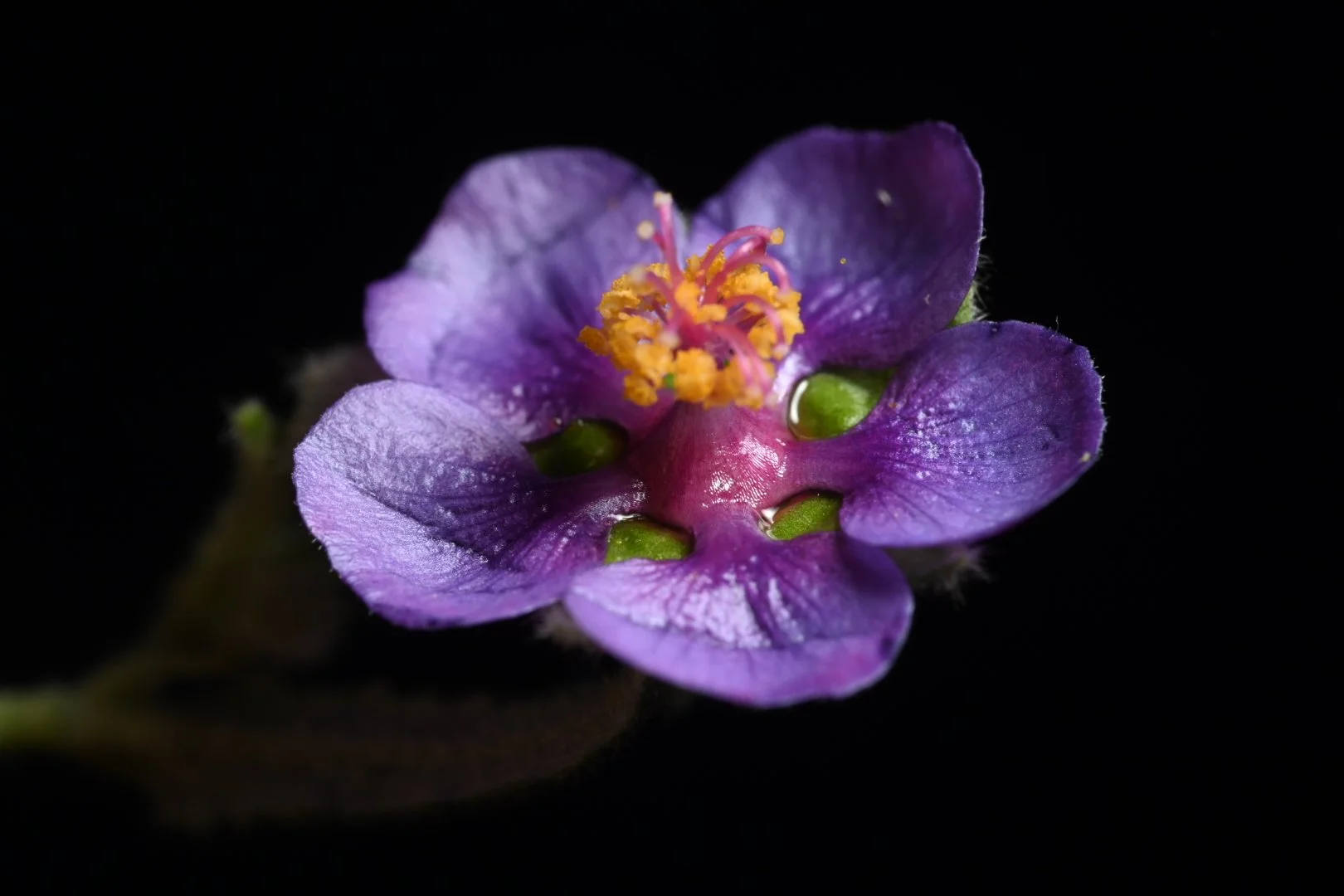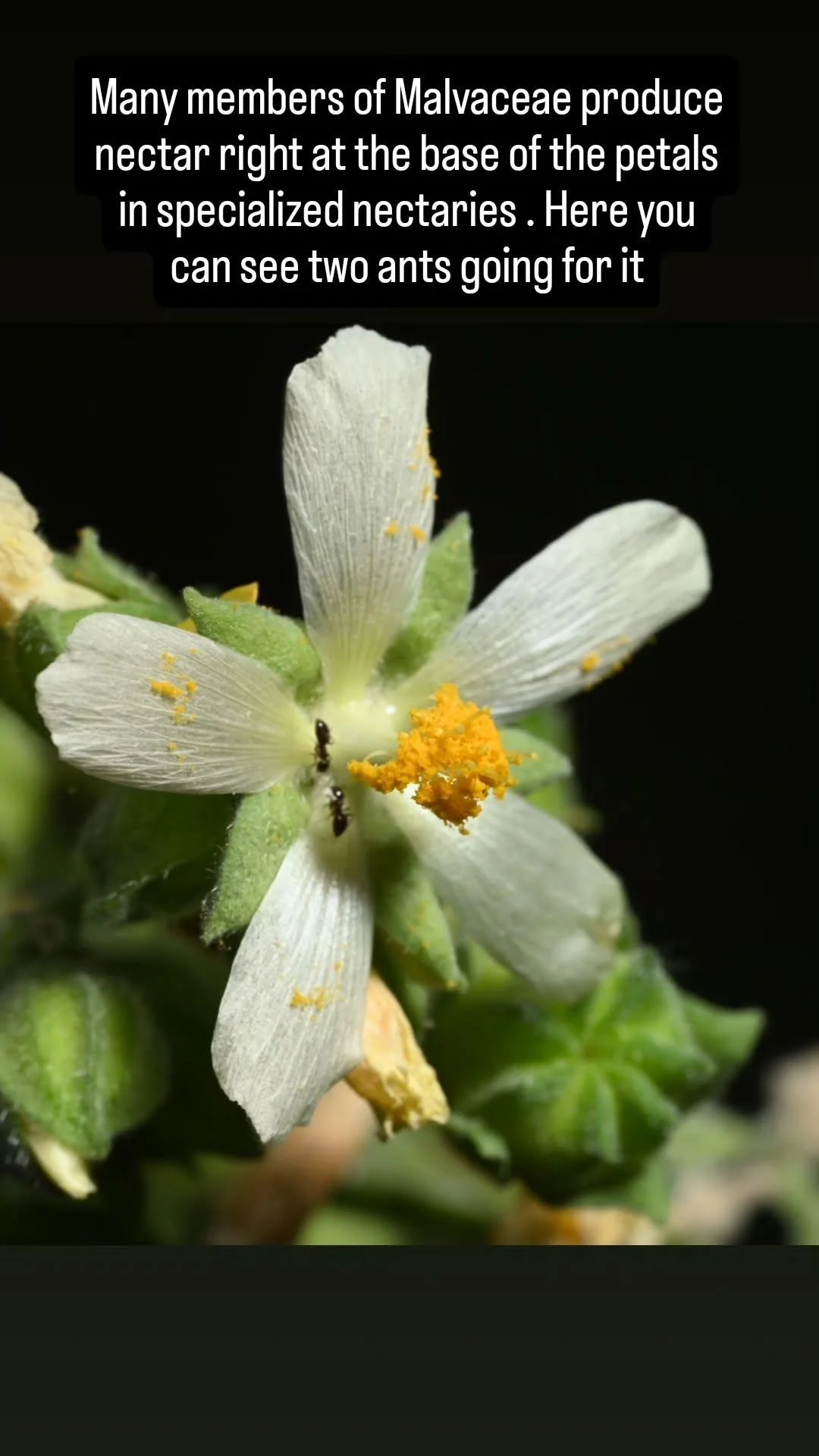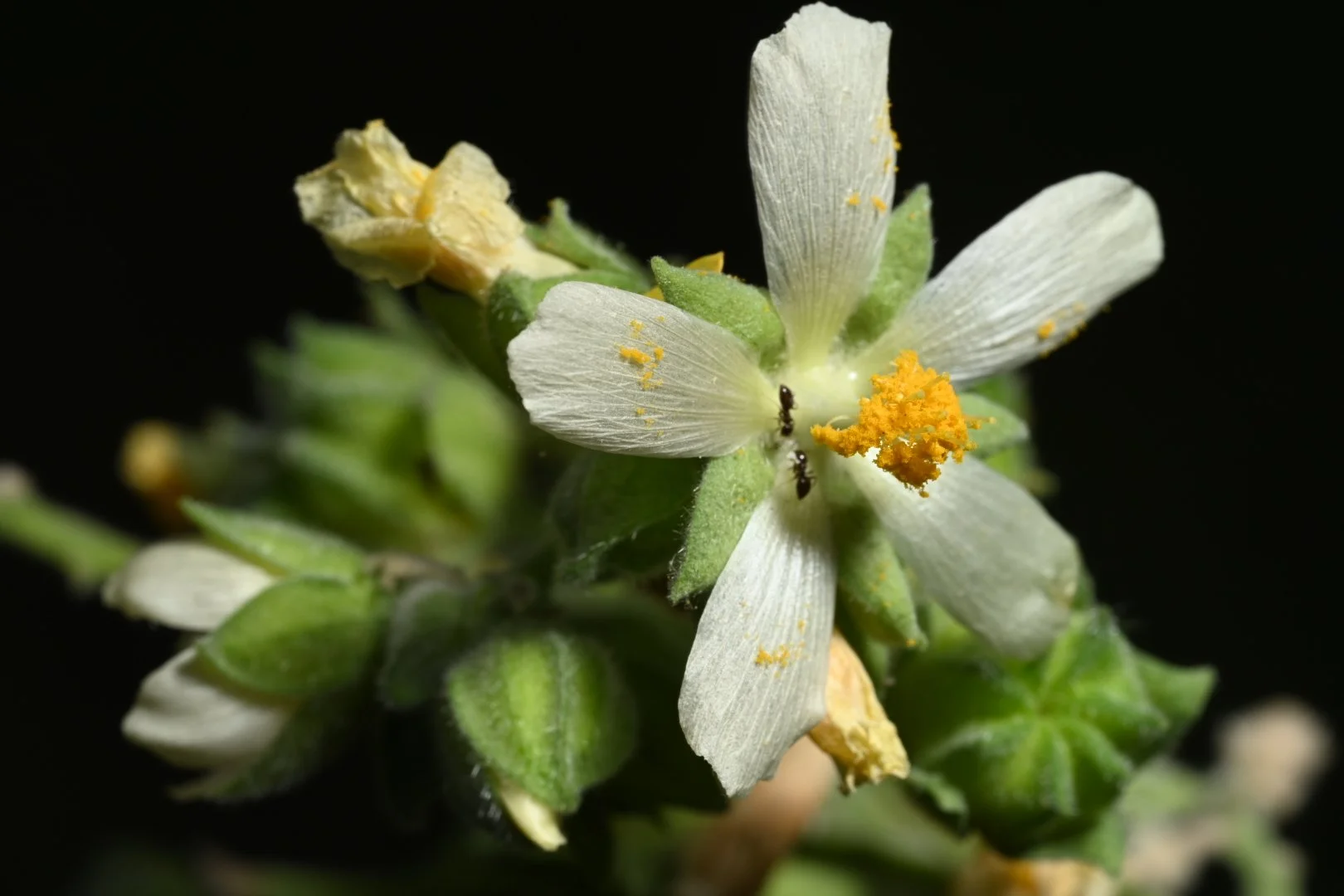Appreciation for the Mallows...
In South Texas and many other tropical areas the cotton,mallow and hibiscus family - Malvaceae - is dominant. Members of this family are marked by a number of key unifying factors - known as *synapomorphies* - that distinguish them as evolutionarily related.
Look at the base of the flowers in this series of photographs - You can literally see nectar glistening at the base of many of them. This nectar is secreted by specialized hairs at the base of the sepals (the layer of floral parts below the petals) termed *trichomatous nectaries*, which is one of the distinguishing factors of the family Malvaceae.
Synapomorphies for a family or genus are a wonderful thing to be aware of, because it shows you how two plant species may be related. Knowing which synapomorphies belong to which family enable you to encounter a plant species that you have never seen before and automatically recognize that it is a member of a certain family or genus, thus helping you further place it and identify it.
Another synapomorphy for this family is the structure in the center of the flower, known as a *staminal column*. You can very clearly see the structure and most members of the genus Hibiscus. It consists of all of the male parts fused together in a hollow tube, while the female part (the style, topped by 5 stigma lobes) rises up through the center of this hollow tube to emerge at the top. If you see this structure in a flower you know it is a member of the Malvaceae.
This is a very important family of plants, not only ecologically to the landscapes they grow on, but economically to humans as well. Chocolate, cotton, balsa, hibiscus, okra and many more food and fiber crops are members of this family.




